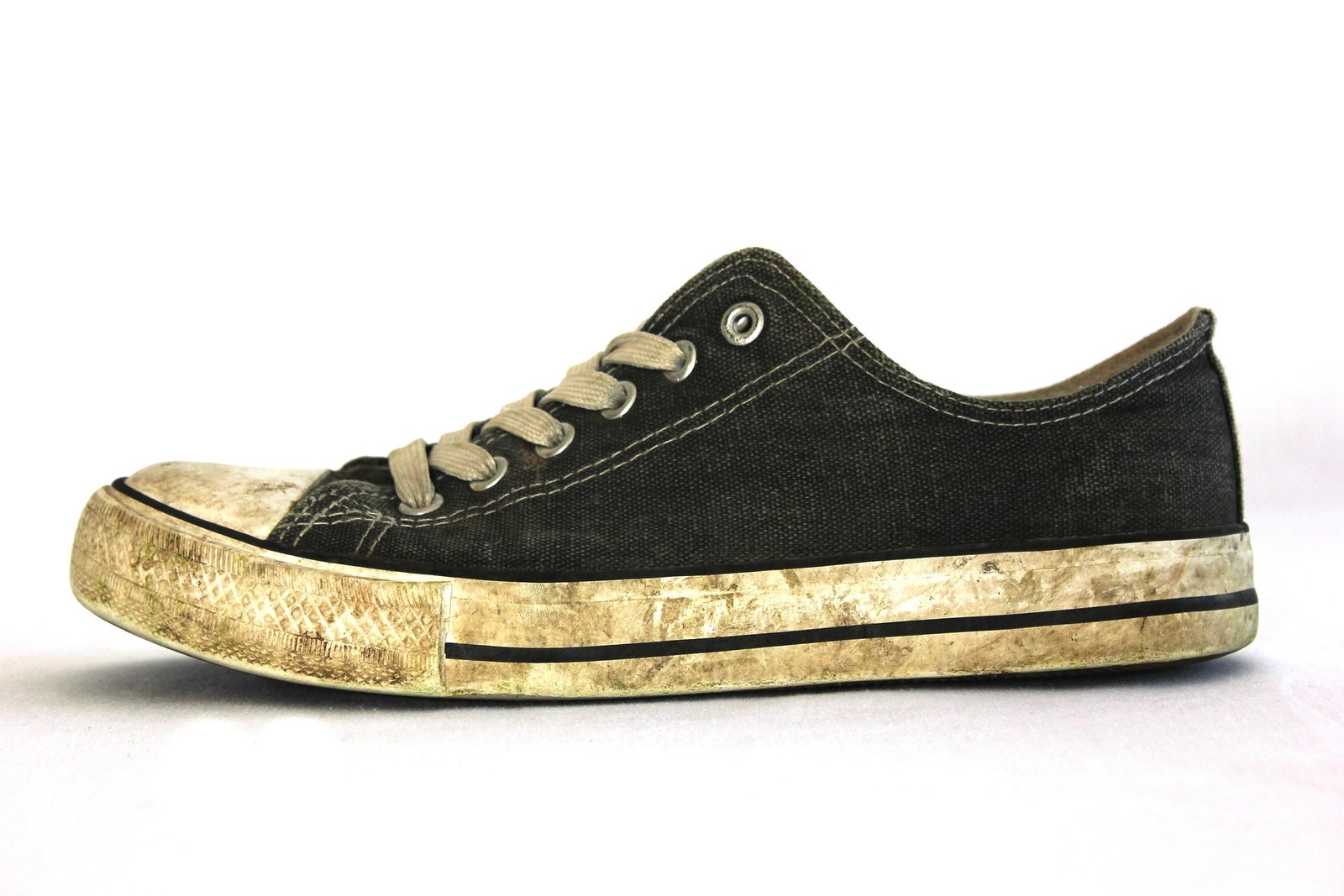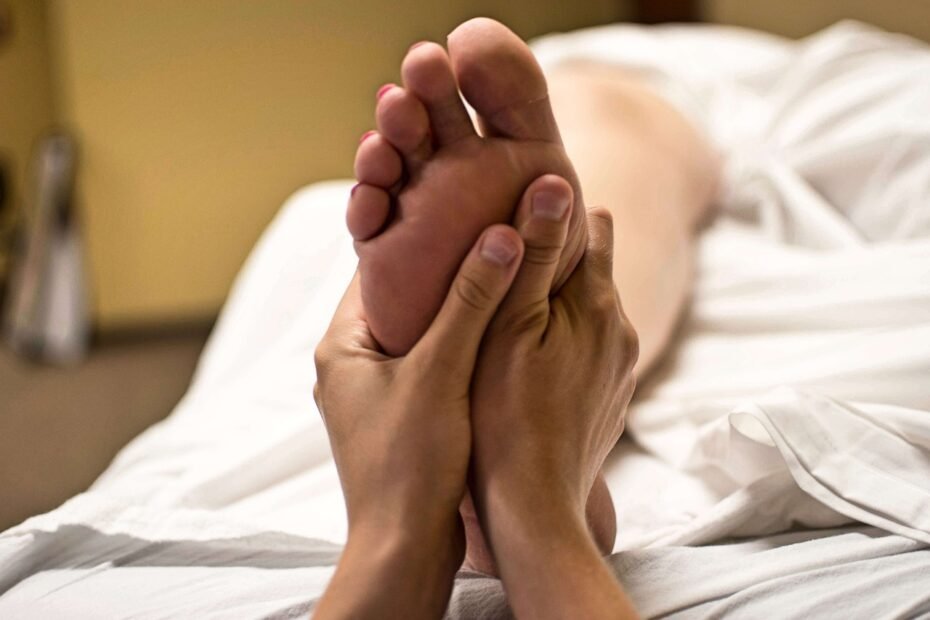Plantar Fasciitis Massage: Soothing Relief for Your Feet
Plantar Fasciitis can be a real pain in the foot, literally. It’s a common condition that affects millions of people worldwide. This condition causes inflammation and pain in the plantar fascia, which is a thick band of tissue that runs across the bottom of your feet. Foot massage has been proven to be effective in treating Plantar Fasciitis by improving circulation and reducing inflammation. In this blog, we will discuss how foot massage can help you relieve the symptoms of Plantar Fasciitis and how you can do it at home with some simple tools. We will also go over the benefits of foot massage and what to expect during a typical session. Additionally, we will provide insights on when to seek professional help and how to choose the right footwear for Plantar Fasciitis. Keep reading to learn more about how you can alleviate your foot pain with just a few simple steps.
Understanding Plantar Fasciitis
Plantar fasciitis is a painful condition that affects the bottom of the foot. It occurs due to inflammation of the plantar fascia, which is a band of tissue connecting the heel bone to the toes. Foot massage can be beneficial in providing relief from the pain caused by plantar fasciitis. Deep tissue massage therapy can improve blood flow and reduce inflammation in the affected area. Physical therapy and massage therapy are commonly used treatment options for this condition. By incorporating massage techniques, individuals can find relief from heel pain and promote a healthy environment for healing.
Causes and Symptoms
Causes and Symptoms:
Plantar fasciitis can develop due to repetitive strain injury, prolonged periods of standing or walking, or tight calf muscles. This could be due to leisure activities or your job role. The hallmark symptom of this condition is a sharp, intense pain in the arch and heel of the foot. Individuals with flat feet, high arches, or tight calf muscles are more susceptible to developing plantar fasciitis. If left untreated, chronic inflammation of the plantar fascia can lead to tissue degradation and persistent heel pain. Seeking treatment is crucial to prevent further damage and alleviate discomfort.

The Role of Foot Massage in Treating Plantar Fasciitis
Foot massage plays a crucial role in the treatment of plantar fasciitis. It helps alleviate pain and inflammation associated with this condition. By focusing on the arch of the foot, heel, and calf muscles, massage therapy targets the areas most affected by plantar fasciitis. Regular foot massage improves blood flow, reduces inflammation, and promotes healing. Deep tissue massage and self foot massage techniques specifically target the plantar fascia and calf muscles, providing much-needed pain relief. It is often recommended to combine massage therapy with other treatment options for optimal results.
Benefits of Foot Massage for Plantar Fasciitis
Relaxing and relieving, foot massage offers numerous benefits for those dealing with plantar fasciitis. By targeting the arch of the foot and heel, it can effectively stretch the plantar fascia, providing much-needed relief from pain. Additionally, foot massage stimulates blood flow, promoting healing and reducing inflammation. Regular sessions not only alleviate current discomfort but also help prevent the recurrence of plantar fasciitis and maintain overall foot health. Best of all, you can perform massage therapy at home using simple tools like tennis balls or rolling pins. It’s a natural and affordable method to bring comfort to your feet.
Preparing for Foot Massage at Home
To ensure a smooth foot massage at home, gather the necessary tools such as tennis balls, rolling pins, or specialized massage tools. Create a comfortable and relaxing space by setting up soft lighting, playing calming music, or using aromatherapy. To enhance the experience, use massage oils, creams, or lotions for a pain-free session. Remember to maintain proper hygiene by washing your feet before the massage. By following these steps, you can create a peaceful and healthy environment to enjoy a foot massage at home.

Gathering the Right Tools
When it comes to self-foot massage for plantar fasciitis, gathering the right tools is essential. Tennis balls, rolling pins, or specialized massage tools can be used to target specific areas and provide relief. One popular technique involves using a tennis ball to roll it under the arch of the foot, heel, and calf muscles. For a deeper tissue massage, a rolling pin can be utilized by rolling it under the foot. Additionally, there are various massage tools available, such as foot massage balls or foot massage rollers, which allow for more targeted pain relief. It’s important to choose the right tool based on personal preference and comfort.
Setting Up Your Space
To ensure a comfortable and relaxing foot massage experience, it’s important to create the right environment. Start by setting up a space that is free from distractions and interruptions. Use cushions, pillows, or footrests to provide support and relaxation during the massage. Proper lighting, whether it’s soft or natural, can help create a soothing ambiance. Consider adding calming elements like scented candles, essential oils, or relaxing music to enhance the experience. Lastly, make sure the room temperature is comfortable for the foot massage. By setting up a healthy environment, you’ll be able to fully enjoy the benefits of this particular method.

Step-by-Step Guide to Foot Massage for Plantar Fasciitis
To perform a foot massage for plantar fasciitis, start with a deep tissue massage technique. Apply pressure to the arch of the foot and heel, targeting the painful areas. Incorporate stretching techniques like toe stretches, calf stretches, and foot flexes to provide relief to the plantar fascia. Use your hands, thumbs, or massage tools to perform a deep tissue massage, focusing on the painful areas. For a smoother massage experience, apply massage oil, cream, or lotion. Gradually increase the pressure of the massage based on personal comfort levels.
Starting with Deep Tissue Massage
Applying deep tissue foot massage is an effective method to alleviate plantar fasciitis symptoms. By targeting the arch of the foot, heel, and calf muscles, you can provide relief from heel pain and discomfort. Use your hands, thumbs, or massage tools to apply firm pressure to the painful areas. Slow and deep strokes along the arch, heel, and calf muscles can help break down scar tissue and promote healing. You can also incorporate circular motions, kneading, or pinching techniques to further enhance the deep tissue massage experience. Adjust the pressure according to your pain levels and personal comfort for optimal results.
Incorporating Stretching Techniques
Incorporating stretching techniques can be beneficial for providing relief from plantar fasciitis pain. Toe stretches, calf stretches, and foot flexes specifically target the plantar fascia and help to alleviate discomfort. Toe stretches involve gently pulling the big toe back, holding for a few seconds, and releasing. For calf stretches, you can stand on the edge of a step and lower your heels, targeting the calf muscles. Foot flexes involve flexing the foot, pointing the toes, and rolling the arch of the foot. These stretching techniques can be repeated as needed for pain relief.
How Does Heat and Cold Water Therapy Enhance the Effects of Massage?
Heat and cold water therapy can enhance the effects of massage for plantar fasciitis. Heat increases blood flow, promoting muscle relaxation and pain relief, while cold water reduces inflammation and numbs the area for pain relief. Alternating between hot and cold therapy can help stimulate blood flow, reduce pain, and promote healing.

When Should You Seek Professional Help?
If self-care methods aren’t providing relief for your plantar fasciitis, it may be time to consult a professional. A massage therapist experienced in treating plantar fasciitis can offer targeted techniques for pain relief. Seek help if the pain is chronic, severe, or impacting your daily activities. They can assess your condition and recommend appropriate treatment options.
If you are looking for an approved Podiatrist then you could try https://www.apma.org/ (for USA) and https://rcpod.org.uk/ (for the UK).
Is it Safe to Keep Wearing Old Shoes while Dealing with Plantar Fasciitis?
Continuing to wear old, unsupportive shoes can worsen plantar fasciitis pain. It’s important to invest in new, supportive footwear that provides proper arch support and cushioning. This can help reduce strain on the plantar fascia and aid in the healing process. Replace worn-out shoes to alleviate pain and promote foot health.

How can massage help in relieving plantar fasciitis pain?
Massage can help relieve plantar fasciitis pain by increasing blood flow, reducing inflammation, and promoting relaxation. By targeting the muscles and fascia in the foot, massage can help loosen tightness and tension, improving mobility and reducing pain associated with plantar fasciitis.
Choosing the Right Footwear for Plantar Fasciitis
When dealing with plantar fasciitis, choosing the right footwear is crucial for pain relief and proper foot support. Look for shoes that offer good arch support, heel cushioning, and shock absorption to alleviate the discomfort caused by plantar fasciitis. Opt for footwear with a deep heel cup as it provides stability and reduces strain on the plantar fascia and the heel bone. Shoes with removable insoles allow for the use of custom orthotics, providing additional support and comfort. A supportive midsole helps prevent excessive foot pronation, which can worsen plantar fasciitis. Lastly, select shoes with a wide toe box to reduce pressure on the plantar fascia and provide ample space for the toes.
Conclusion – Foot Massage for Plantar Fasciitis
In conclusion, foot massage can be a beneficial treatment for plantar fasciitis. It helps alleviate pain, reduce inflammation, and improve blood circulation in the affected area. By incorporating stretching techniques and utilizing heat and cold water therapy, you can enhance the effects of the massage and promote faster healing. However, it’s important to remember that foot massage alone may not be enough to treat severe cases of plantar fasciitis. If your symptoms persist or worsen, it’s recommended to seek professional help. Additionally, wearing appropriate footwear is crucial for managing and preventing plantar fasciitis. Invest in shoes that provide proper arch support and cushioning to relieve pressure on the plantar fascia. Take care of your feet and prioritize their well-being to ensure long-term comfort and mobility.
I hope you found this article helpful. Please feel free to leave a comment and/ or share.
Keep checking out my website at theheelgp.com for further articles.
Thanks for reading.
Tracy J.
